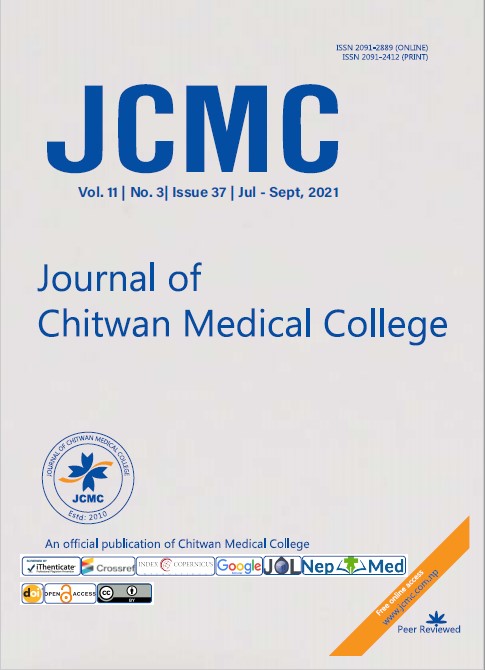MANAGEMENT OF TRAUMATIZED ANTERIOR TEETH AT A TERTIARY CARE CENTER OF NEPAL
DOI:
https://doi.org/10.54530/jcmc.447Keywords:
Dental Trauma; Management; Traumatic dental Injury; Treatment.Abstract
Background: Immediate treatment of an injured tooth is the most significant factor for preserving pulp vitality. Treatment provided immediately after traumatic dental injury significantly improves the prognosis of a traumatized tooth by reducing the risk of complications. Similarly, proper treatment can lead to satisfactory outcomes. The objective of this study was to evaluate the type of treatments provided to the patients with dental trauma and the time elapsed between dental injury and arrival for treatment.
Methods: A retrospective study was conducted including 170 patients (128 males and 42 females) who received treatment for traumatic dental injury during a period between January 2016 and December 2019. The time elapsed between dental trauma and treatment, and the clinical treatments provided were recorded form a review of past records. Data analysis was performed using descriptive statistical methods.
Results: The time elapsed between trauma and treatment was found to range from 1 to 75 hours. (Average time 14.7 hours). An early arrival for treatment of dental trauma within 24 hours was observed among most of the patients (76.46%) in this study. The most commonly provided treatment was composite resin restoration (38.78%). Likewise, the second most frequently provided treatment was root canal treatment (29.08%). Overall splinting was provided in 44 teeth (12.18%), while repositioning along with splinting was performed in 43 teeth (11.91%).
Conclusions: On the basis of the results of this study it can be concluded that, most of the patients with traumatic dental injuries arrived for treatment early and restoration was the most common treatment provided followed by root canal treatment.
Downloads
Published
Issue
Section
License
Copyright (c) 2021 Sanjeeb Chaudhary, Harender Singh, Archana Gharti, Bhawana Adhikari

This work is licensed under a Creative Commons Attribution 4.0 International License.



